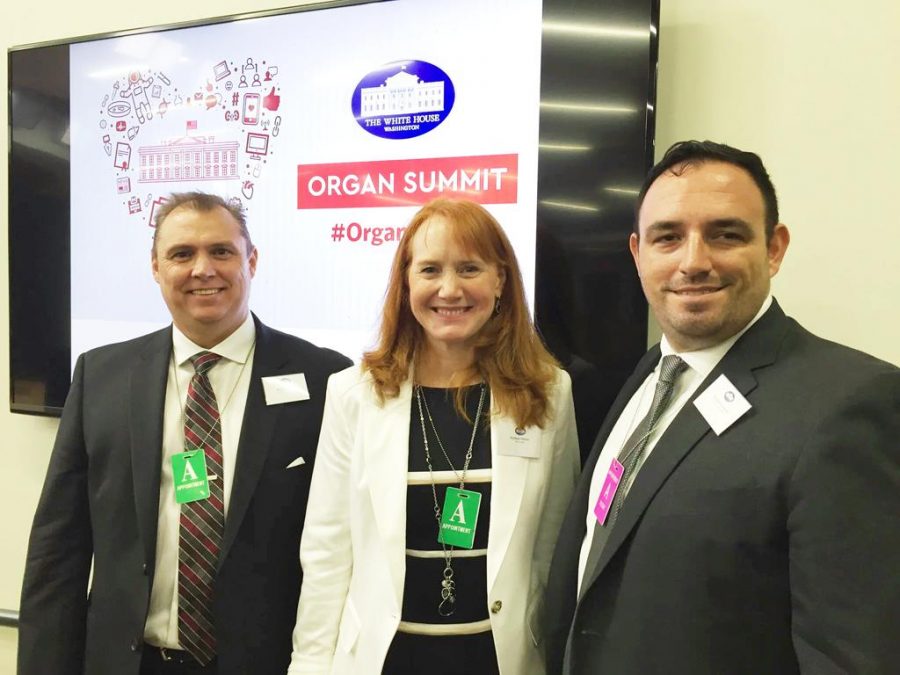Pitt is expanding its research on bone diseases while moving medical science to the “final frontier” — space.
Rocky Tuan, a Pitt biology professor, recently received a $500,000 grant from the Center for the Advancement of Science in Space to conduct research on the accelerated bone loss of astronauts. The research will consist of studying bone and cartilage microtissue on the International Space Station using 3D microphysiological systems, structures on which cells grow, to form tissue. A primary mission of the research is to discover new drugs for treating bone loss.
“One of the challenges of space travel is bone loss. This was noticed very early on in [space] shuttle missions,” Tuan said. “Astronauts and animals that come back from space even after couple of weeks have poor bone quality. Bone loss happens to be a health concern upon exposure to microgravity.”
CASIS awarded $1 million in grant money — $500,000 for each of the two winning projects — as the prize of its 3D Microphysiological Systems for Organs-On-Chips Grand Challenge. The challenge supports research to better understand diseases by studying organs in microgravity environments. Siobhan Malany, principal investigator of research team Micro-gRx, was the other grant recipient at the Organ Summit June 16.
The summit, an event to answer President Barack Obama’s call to action on organ transplants, was held at the White House. Peter Alexander, a data analyst scientist in the research team, accepted the award with Riccardo Gottardi, a postdoctoral fellow, on Tuan’s behalf. Tuan was in Hong Kong and unable to attend the summit.
“CASIS congratulates both award winners from this grand challenge,” CASIS Deputy Chief Scientist Michael Roberts said in a CASIS release. “The space station is a unique learning platform capable of enhancing knowledge to improve human health, and both of the award winners … will leverage microgravity to benefit those suffering from musculoskeletal disease — potentially providing innovations that have the capacity to reverberate throughout the medical community.”
According to Tuan, the principal investigator for the project and director of Pitt’s Center for Cellular and Molecular Engineering, the bone quality of astronauts returning from space is similar to that of osteoporosis patients on Earth.
“The mechanism hasn’t been quite figured out, but it’s not that surprising because if you are messed up in terms of your movement, which is related to gravity, you end up losing bone,” Tuan said. “So gravity has something to do with this bone loss.”
Pitt is able to provide the required tissue and develop a 3D microphysiology system as a bioreactor, Tuan said. The bioreactor provides the desired testing environment for tissues to be experimented within ISS.
“We proposed to them that we are able to make something that looks like a piece of bone and cartilage sandwich — just like bone and cartilage on Earth,” Tuan said, ”So whatever happens to the person who’s up there [in space] should happen to this as well.”
Tuan’s research team has already developed the tissue and the 3D microphysiology system. The next step is to implement the system into ISS, which would be done during the next two years.
Scientists have been conducting bone research on animals for years, but because animal and human bone cells differ, treatments for bone loss might differ as well.
“There have been years of research now looking at the behavior of bone or bone cells in space. But [researchers] have been using animal models like mice,” Alexander said, “I believe we are among the first people to build and test 3D microphysiology systems in space.”
The research will benefit both astronauts in space and people on earth, Gottardi said.
“To a practical end, the 3D microphysiology system is aiming at offering a tool to scientists who are studying musculoskeletal diseases and looking for treatment that works for [an] individual person with bone diseases even on earth,” Gottardi said.
In the long run, the research could make contributions in a range of fields, including science, biomedicine and education, according to Tuan.
“[Our] long-term goal is part of the long-term goal of ISS, which is to push science to the next frontier, to be able to use the facility, to enhance the kind of thing you cannot do here [on earth]. So it’s really opening new frontiers. That’s the scientific side,” Tuan said. “The medical side would be to improve bone health. In terms of the educational side, since we are a University, it’s good to open eyes for students and to stimulate them to think beyond what we do here in laboratory.”
According to Gottardi, the grant not only enabled them to continue conducting research, but proved the value of the proposed system and model.
“On the one hand, it allows us to do research,” Gottardi said. “On the other hand, it’s actually somebody recognizing the value that’s in the work we proposed in the physiology system. People believe in it.”



